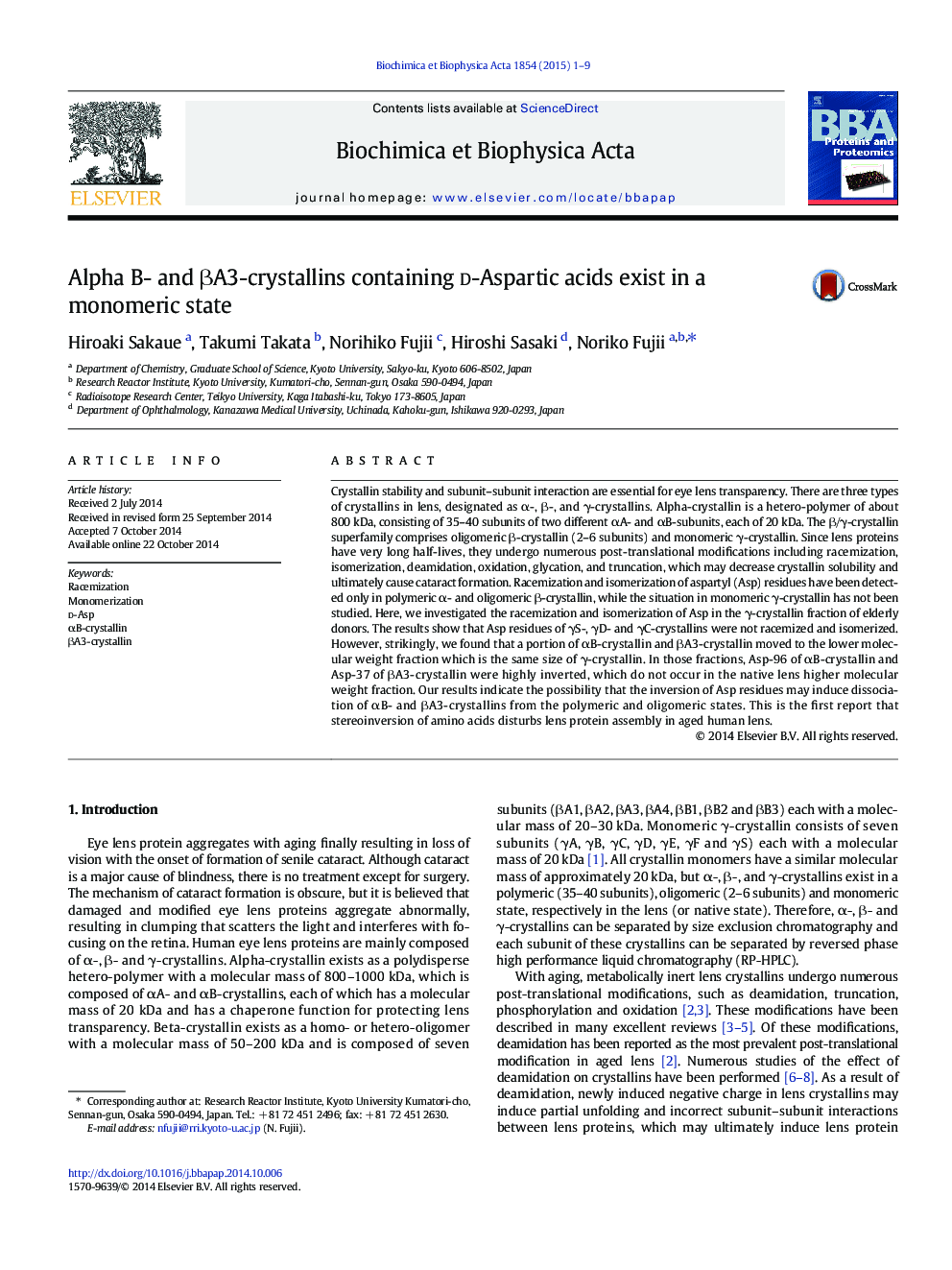| Article ID | Journal | Published Year | Pages | File Type |
|---|---|---|---|---|
| 10537527 | Biochimica et Biophysica Acta (BBA) - Proteins and Proteomics | 2015 | 9 Pages |
Abstract
Crystallin stability and subunit-subunit interaction are essential for eye lens transparency. There are three types of crystallins in lens, designated as α-, β-, and γ-crystallins. Alpha-crystallin is a hetero-polymer of about 800 kDa, consisting of 35-40 subunits of two different αA- and αB-subunits, each of 20 kDa. The β/γ-crystallin superfamily comprises oligomeric β-crystallin (2-6 subunits) and monomeric γ-crystallin. Since lens proteins have very long half-lives, they undergo numerous post-translational modifications including racemization, isomerization, deamidation, oxidation, glycation, and truncation, which may decrease crystallin solubility and ultimately cause cataract formation. Racemization and isomerization of aspartyl (Asp) residues have been detected only in polymeric α- and oligomeric β-crystallin, while the situation in monomeric γ-crystallin has not been studied. Here, we investigated the racemization and isomerization of Asp in the γ-crystallin fraction of elderly donors. The results show that Asp residues of γS-, γD- and γC-crystallins were not racemized and isomerized. However, strikingly, we found that a portion of αB-crystallin and βA3-crystallin moved to the lower molecular weight fraction which is the same size of γ-crystallin. In those fractions, Asp-96 of αB-crystallin and Asp-37 of βA3-crystallin were highly inverted, which do not occur in the native lens higher molecular weight fraction. Our results indicate the possibility that the inversion of Asp residues may induce dissociation of αB- and βA3-crystallins from the polymeric and oligomeric states. This is the first report that stereoinversion of amino acids disturbs lens protein assembly in aged human lens.
Related Topics
Physical Sciences and Engineering
Chemistry
Analytical Chemistry
Authors
Hiroaki Sakaue, Takumi Takata, Norihiko Fujii, Hiroshi Sasaki, Noriko Fujii,
